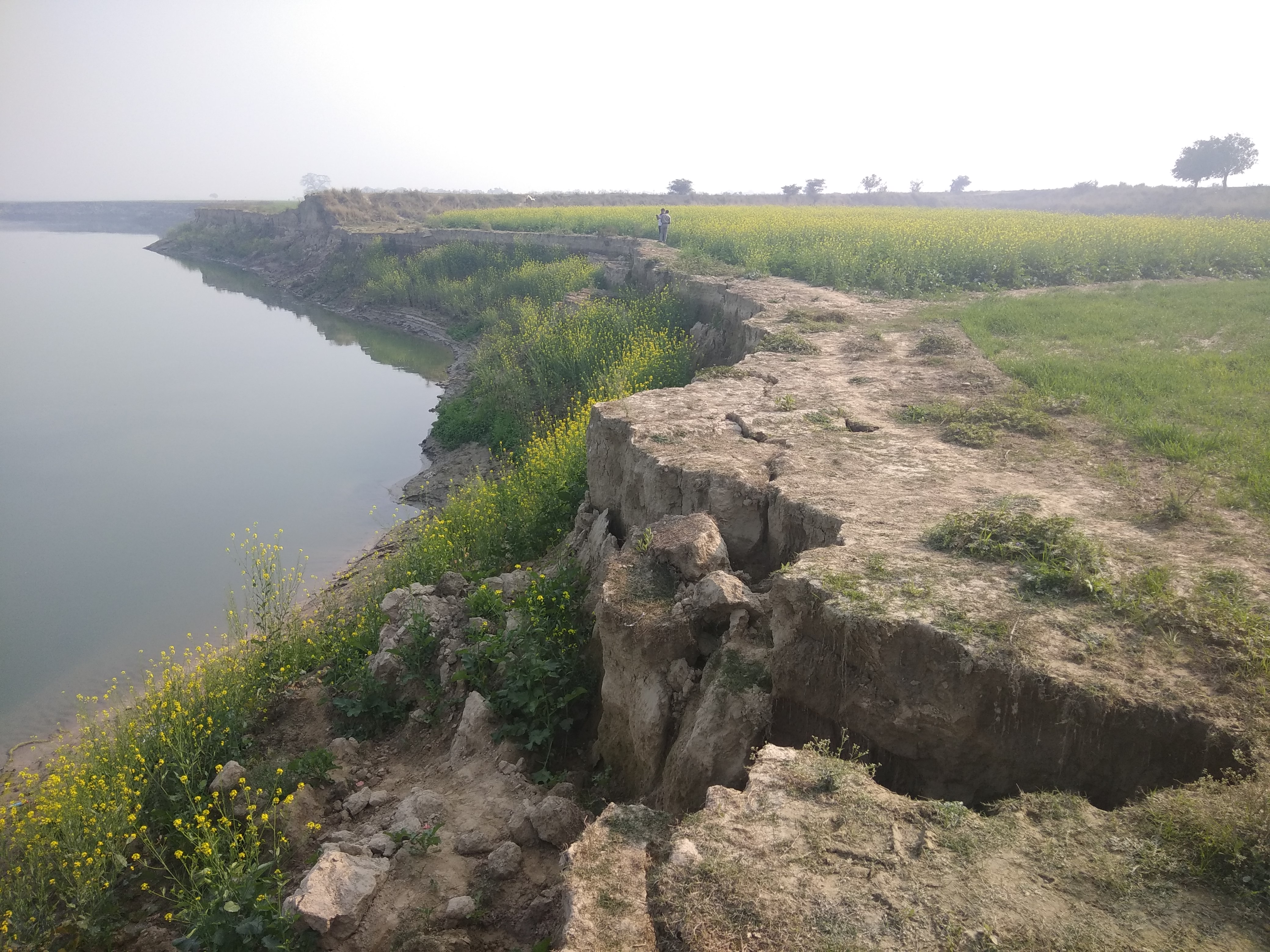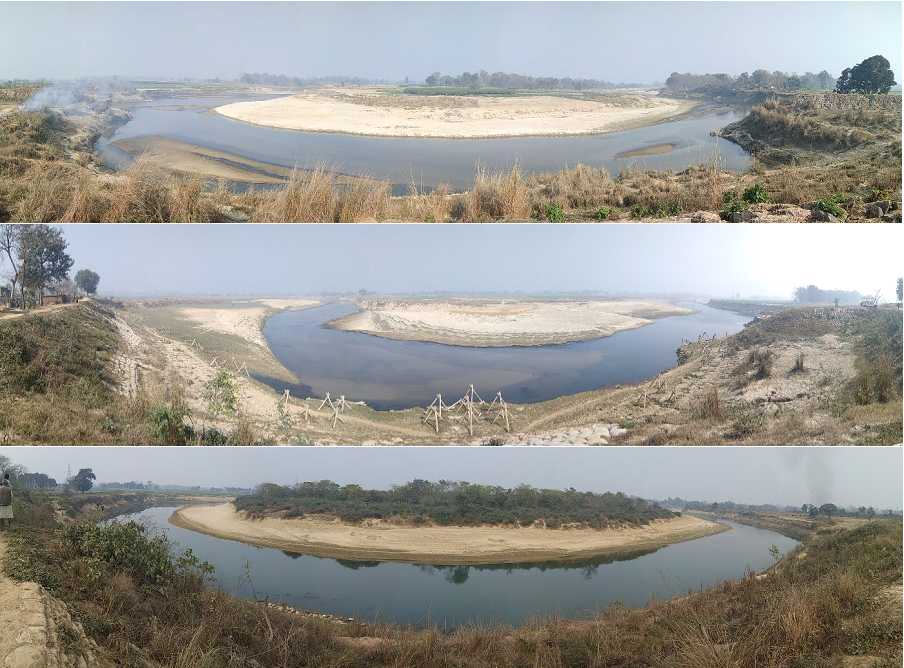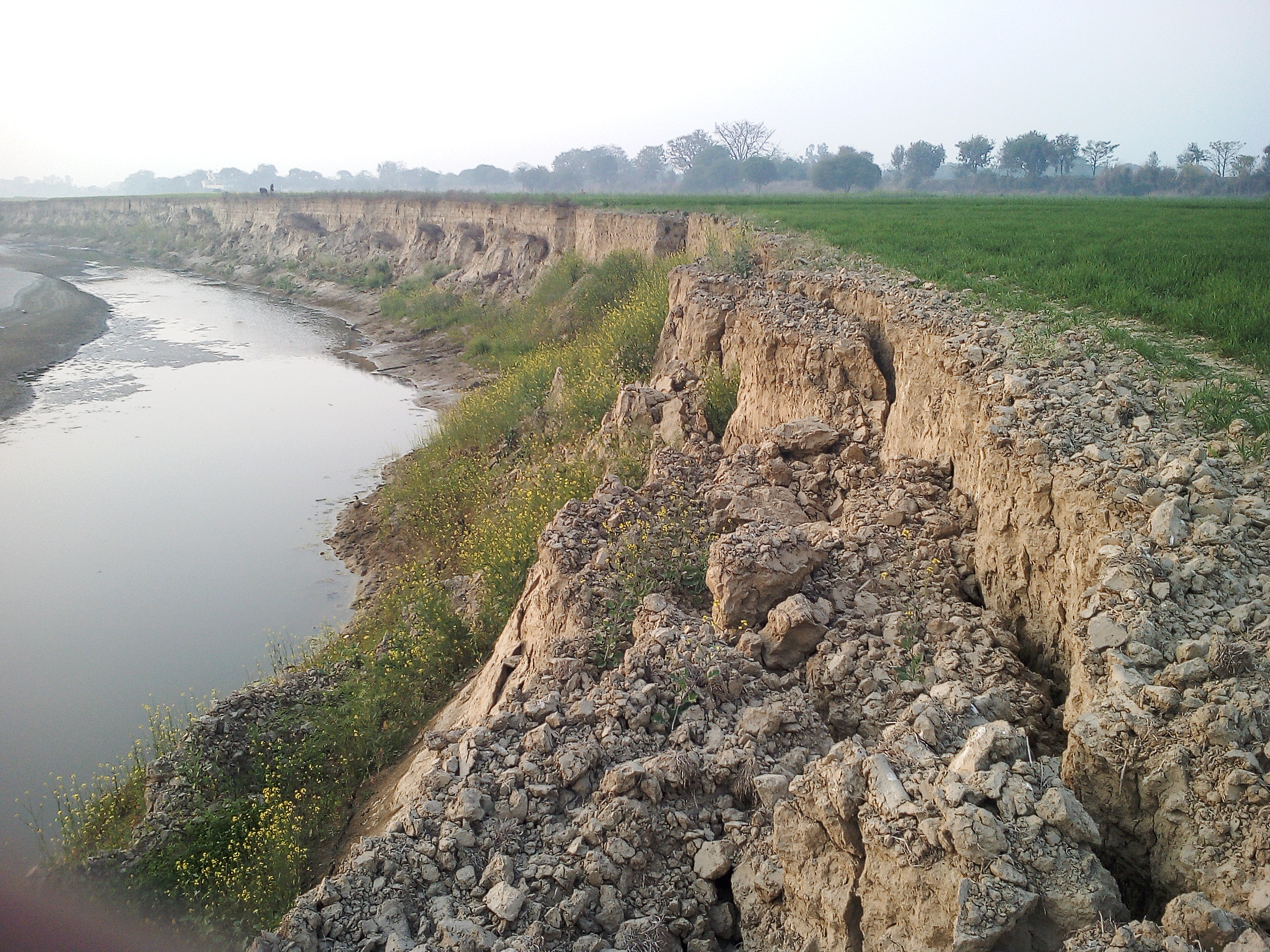



Rapti
An understanding of the morphology and behaviour of a river is a pre-requisite for scientific and rational approaches to planning and design of river training schemes. A morphological study seeks to understand the behaviour of a river, that can be manifested in frequent changes of the river course, lateral migration of the channel and/or frequent erosion of river banks and embankments.
Morphological studies play an important role in planning, designing and maintaining river engineering structures. In the Rapti River Basin, the rivers have largely been confined between their flood embankments, yet the lateral migration of the rivers continues. The migration is driven by deposition of excessive sediment loads carried by the river. This natural lateral migration results in endangering embankments and river training works and often costly anti-erosion works to strengthen and protect these river protection and training works.
The objective of this study was to understand ongoing morphological processes and develop a satellite imagery-based methodology to predict future short-term morphological changes in the Rapti River system and their implications for flood management activities. It involved the identification of priority vulnerable sites to existing and planned flood management infrastructure, the preparation of a user manual, the training for FMISC and Field engineers in using the model and the assistance in integrating the process and results of the study.
The satellite imagery based empirical morphological prediction approach provides a viable alternative to complex conceptual models which require extensive field data. Historic satellite imagery, supported by field assessments, provide a useful information source for mapping river plan form features and tracking rates of change. Multi-temporal satellite image can be analyzed to determine the interaction between deposition and erosion features and flow fields. As new satellite imagery becomes available the results can be updated to reflect the most recent river morphology regime. This type of study is helpful for planning of river training works and anti-erosion control schemes to sustain flood protection as it identifies where erosion is most likely to affect planned structures.
We'd Love to hear from you